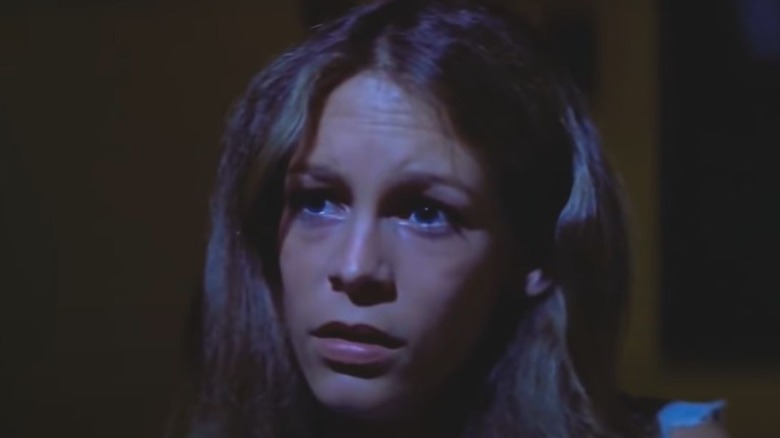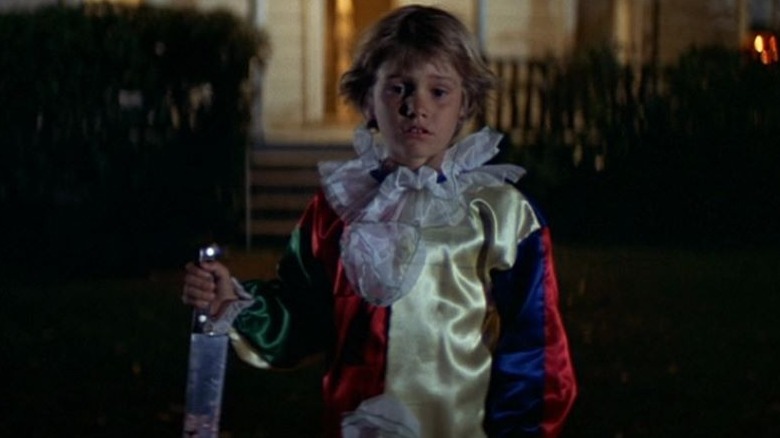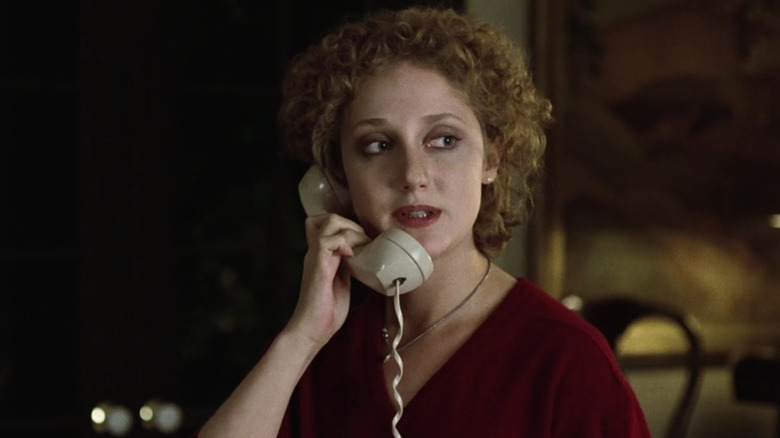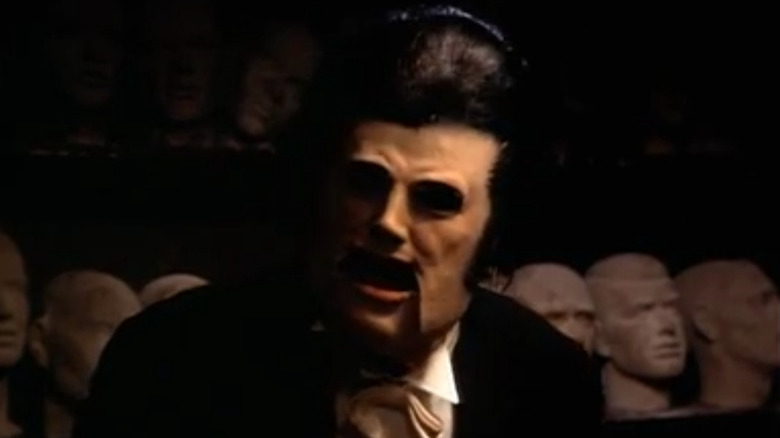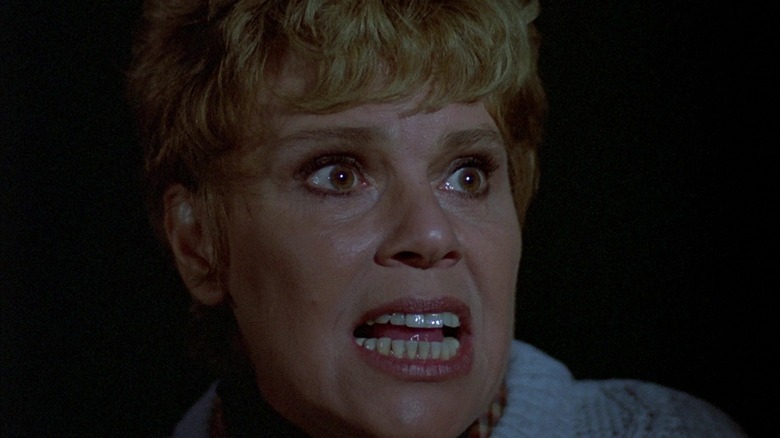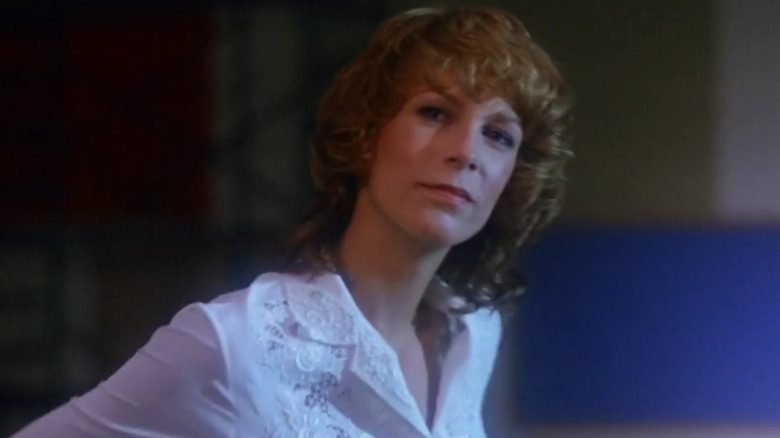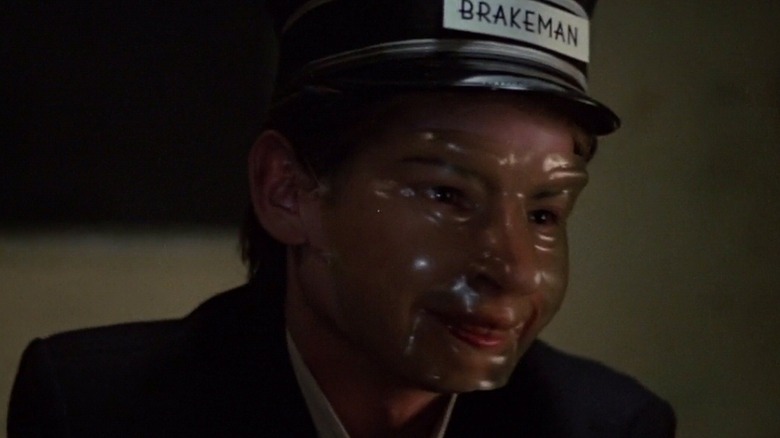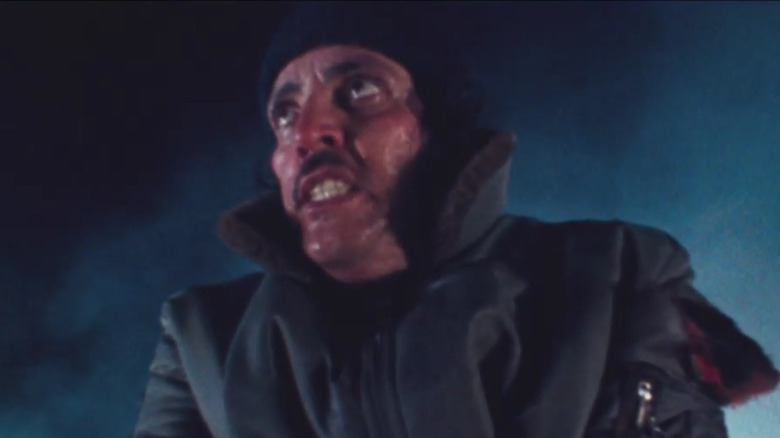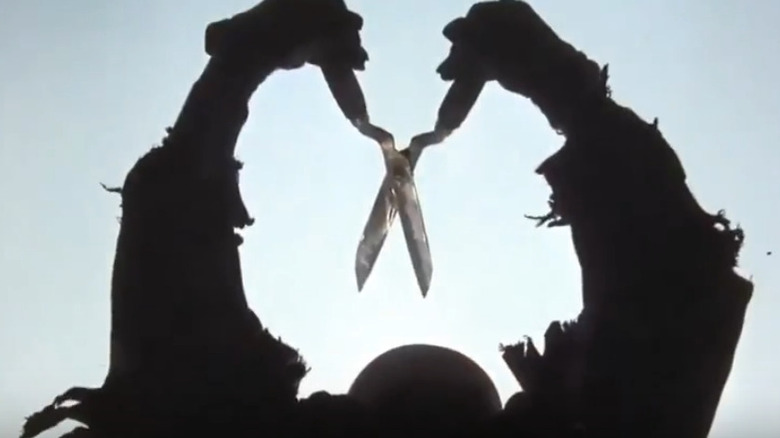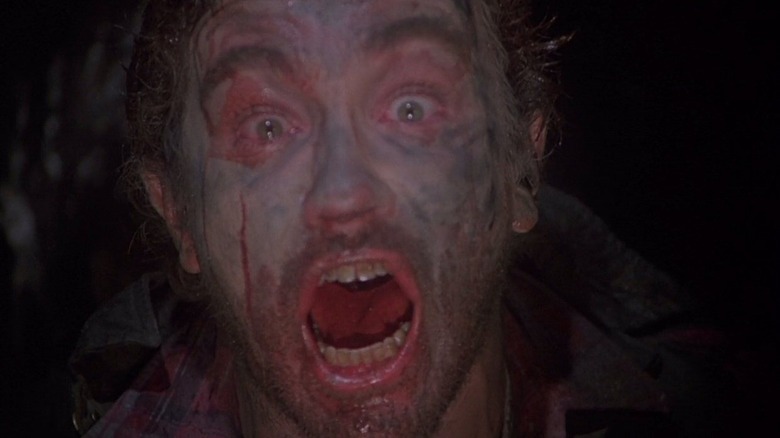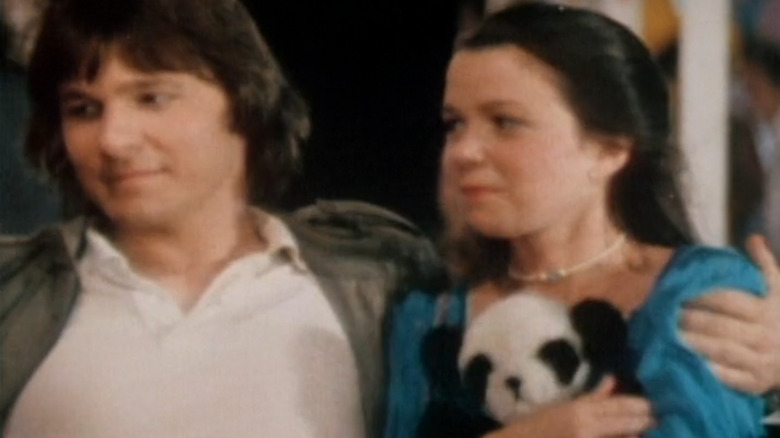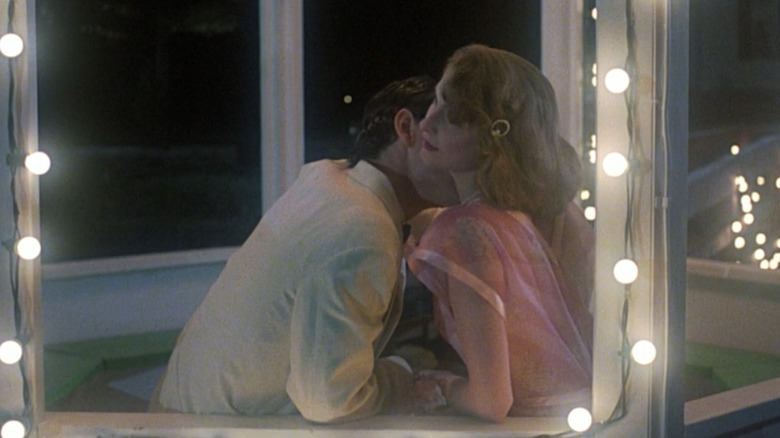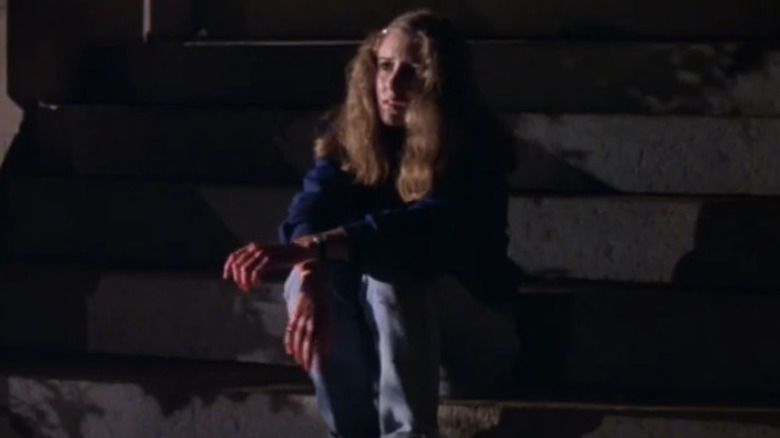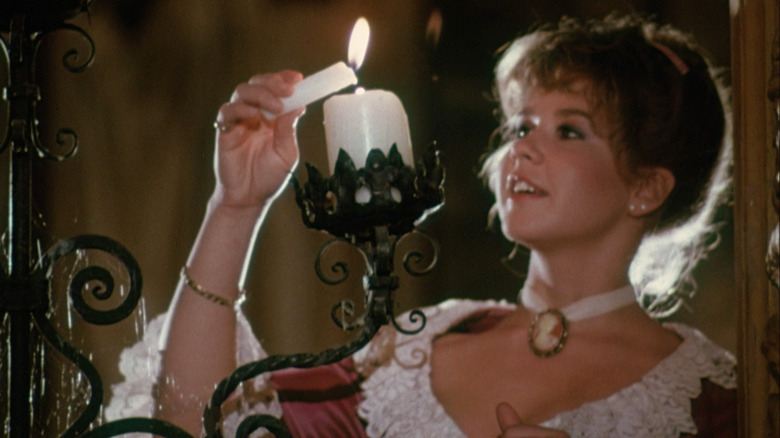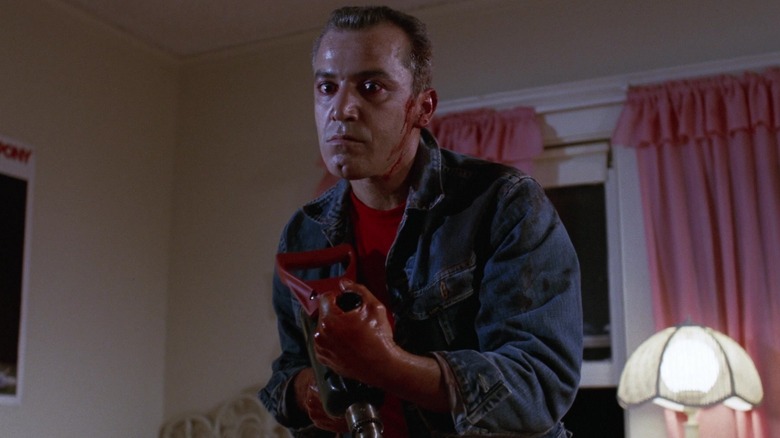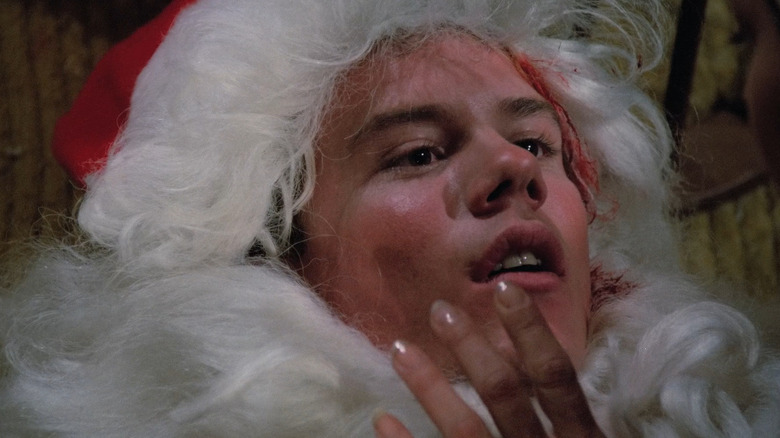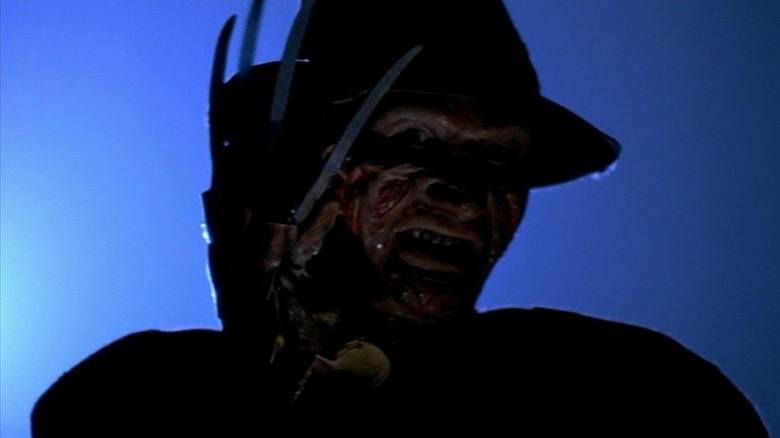The Best Golden Age Slasher Films
We love all kinds of horror movies, but there's a particular itch that only a good slasher can scratch: Call it a blend of nail-biting suspense and goofy, adrenaline-fueled, gory fun. Horror fans and scholars tend to date the Golden Age of the Slasher Movie as running from 1978-1984 — or from "Halloween" to "A Nightmare on Elm Street," if you want to think of the period as being book-ended by two stone-cold classics. The Golden Age had its fair share of duds, of course — plenty of people tried to cash in on the market without really understanding it — but it had way more than its fair share of macabre masterpieces.
Here are our top picks from the genre's peak years. You'll find a great mix of pure terror, psychological insight, artistic integrity, cheesy goodness, and gallons of fake blood. Sit back and get ready to yell survival tips at the screen.
Halloween
"Halloween" wasn't the first slasher movie, but it remains the definitive slasher movie, the one that set the genre's rules in stone. Its characters, visuals, and score are all rightly legendary.
Years ago, a six-year-old Michael Myers stabbed his older sister to death on Halloween night. Now, after years in a sanitarium, he's escaped and come back home. And his motives are so simple, they're practically nonexistent. As babysitter Laurie Strode will eventually say, he's the boogeyman. (The movie actually credits him as "The Shape," as if he's something more primitively eerie than any actual person could be.) Michael kills babysitters and their boyfriends, and it's as simple as that. Starting with "Halloween II" — a high-quality Golden Age slasher in its own right — the movies take tentative steps towards defining Michael as a character with some kind of actual agenda. Here, in the first and best of the series, he just kills. It gives the movie the ruthless simplicity of a campfire tale.
When a Stranger Calls
1979's "When a Stranger Calls" may sag into a kind of quiet, introspective crime movie in its middle, but trust us, the middle isn't what you're going to remember. All you need is the first 20 minutes, which have gone down in movie history. Wes Craven even borrowed from them for the opening of the meta-slasher "Scream."
Like the pre-Golden Age classic "Black Christmas," "When a Stranger Calls" gets a jolt of terror from one of the most widespread and icily disturbing urban legends: "The call is coming from inside the house."
When babysitter Jill gets repeated, unnerving phone calls from a mystery man who asks her to "check the children" she's looking after, her nerves start to fray. (As do ours, because this is one creepy voice.) The caller gets more and more insistent, and we feel every bit of Jill's terror ... especially since the house around her is so huge and dark. Those shadows could be hiding anyone.
Tourist Trap
"Tourist Trap" melds a traditional slasher plot with the supernatural and — even more potently — the old school horror trope of the creepy wax museum. (In other words, the only kind of wax museum.)
Here, road-tripping college students get a flat tire and soon find themselves in a nightmare. A deranged telekinetic serial killer has chosen them for his prey, and he wants to cover them with wax and plaster and welcome them into his faded tourist trap of a museum. The sheer specificity of that setup could easily make it ludicrous, but an outstanding villain performance keeps it chilling. Sure, the telekinetic powers might be one complication too many, and the way people are turned into dummies seems to change at random ... but is it scary? Definitely. When the killer calmly explains to a helpless woman how the plaster mummification process will make her heart burst, we can't listen without shivering. And the film's ending has the same kind of weird, wild transcendence as "The Texas Chain Saw Massacre."
Friday the 13th
In 1980, "Friday the 13th" instantly became immortal. It may not have the strong directorial presence of "Halloween," but it has plenty of atmosphere, a classic twist, and gore effects by horror hero Tom Savini. It basically ruined summer camp for a whole generation of '80s kids: No, thanks, Mom and Dad, we think we'll take a pass on being brutally murdered.
The movie deals with the attempted reopening of Camp Crystal Lake, which fell into disrepair after two counselors were murdered several years before. (Believe us, Camp Crystal Lake: Two deaths are nothing. Just wait until you've got a few more franchise installments under your belt.) The camp is also plagued by the legend of Jason Voorhees, a young boy who drowned in the lake because the counselors were too busy with each other to pay him any attention.
Someone doesn't want the camp back in operation, and they're willing to cut a bloody swathe through the fresh-faced counselors to keep it closed. That mission leads to some inventive kills — a young Kevin Bacon takes an arrow through the throat! — and an awesome final confrontation.
Prom Night
Jamie Lee Curtis continues her Scream Queen reign with the disco-infused "Prom Night," where she gets to show a slightly goofier side than "Halloween" ever allowed.
The backstory here is simple: A group of kids accidentally bully a little girl into falling out of a window to her death, and they all decide to cover it up. Years later, at their high school prom, someone seems to be out for revenge.
"Prom Night" has some bonus appeal now just because of its gleeful datedness: The music is a time capsule of 1980, and we mean that in a good way. But "Prom Night" was most important to the genre in terms of its gore — or lack thereof. After a lot of complaints about the splattery violence of slasher movies, "Prom Night" toned everything down, making a more suspense-oriented film with mostly off-screen kills. Contemporary reviews of "Prom Night" show that the softer approach definitely had its fans.
Terror Train
In "Terror Train," a group of college students celebrate their upcoming graduation by renting a train for a private costume party. As it turns out, they should have just had a barbecue. A killer — presumably tied to a vicious and bizarre prank everyone had played years before — has boarded the train with them, and since he can swap out costumes as he goes, each scene has a dark unease to it. Who's really behind that mask?
But the fun doesn't stop there. We also have Jamie Lee Curtis along as Final Girl Alana, and — more surprisingly — David Copperfield himself turns up to do a magic show. And if you notice that the film looks great, that's because of legendary cinematographer John Alcott, who also shot a few other movies you may have heard of, like "The Shining," "2001: A Space Odyssey," and "A Clockwork Orange." There's a lot of talent on this train.
Maniac
1980's "Maniac" exists on the dark and gritty borderline between a slasher and a psychological horror film like "Henry, Portrait of a Serial Killer" or "Silence of the Lambs." It's as gruesome and gory as any "Friday the 13th" movie — and it even shares the same genius makeup and effects artist, the great Tom Savini — but it combines all that fake blood with a lot of grim, downbeat realism.
Joe Spinell stars as Frank Zito, a man compulsively driven to murder and scalp women. (He places their scalps on mannequins in his apartment, in case you were worried the scalping wasn't enough to give you nightmares.) Spinell's performance is unusually nuanced, and he makes Frank pitiable as well as monstrous; sometimes, in defiance of all logic, he even makes him charming. He's the best reason to watch the movie, but the grimy New York atmosphere is a close second.
The Burning
Summer camps are a slasher movie staple, but few lean into the setting as much as the cult classic "The Burning." The killer is a horrifically burned former camp caretaker named Cropsy — armed with a sinister pair of gardening shears — and the protagonists are all earnest counselors trying to protect their young charges from his rampage of revenge. Having all these kids in danger ups the stakes.
Having the camp in full-swing operation also gives the counselors and their campers more chances for real character development. We see which counselors try hard to pitch in and help the kids' self-esteem, for example, and it makes us like them all the more. It also helps that "The Burning" snagged a couple of star actors at the start of the career: It was the debut feature for both Jason Alexander and Holly Hunter. A few great suspense sequences — there's a canoe scene that will stick with you for sure — seal the deal on making this a slasher gem.
My Bloody Valentine
According to The Daily Beast, Quentin Tarantino has cited "My Bloody Valentine" as his favorite slasher movie. It's a strong choice for a lot of reasons.
One big asset is the setting. "My Bloody Valentine" is set in a small, blue-collar mining town: The biggest social event around is the Valentine's Day dance, and that's been on hold for years at this point. (For, as it turns out, a very good reason.) The cast of twenty-something working stiffs is a nice change from the usual crowd of slasher victims: They're appealingly ordinary without being generic. The movie also uses its location by moving the action to the coal mine itself — making excellent and highly creepy use of pickaxes, cramped tunnels, cave-ins, drills, and more.
The more-or-less arbitrary whodunnit factor drags the movie down a little, but an out-of-nowhere ending can't take away from the film's considerable charms. Besides, how can you not love a movie where a human heart gets delivered inside a box of Valentine's Day chocolates?
The Funhouse
Tobe Hooper — the dark genius behind "The Texas Chain Saw Massacre" and "Poltergeist" — puts together a terrific, atmospheric slasher in "The Funhouse." We have two words for you: creepy carnival.
A group of teens hit up a shabby, slightly sinister carnival for a fun night out, and, needless to say, they get more than they bargained for. Before they know it, they've witnessed a murder ... and the unscrupulous, abusive carnival owner has sicced his deformed son Gunther on them. And while Gunther is pitiable, he's also brutal and just about unstoppable. The movie turns into an intense cat-and-mouse game played out in the funhouse itself. Think of it as "Die Hard" at a carnival, only the bad guy looks less like Alan Rickman and more like a human vampire bat.
Carnivals are a horror staple for a reason, and "The Funhouse" leans into all their sleazy-but-slightly-magical fun. And with Hooper behind the camera, you just know the dysfunctional killer family is going to be grotesquely enjoyable.
The Prowler
In slashers, it's common for killers to be motivated by old grudges, but few grudges are as dusty as the one in "The Prowler," a 1981 slasher with a prologue segment set back in 1944. A young woman named Rosemary has dumped her soldier boyfriend, and we soon learn that he took it very personally. Sure, no one likes getting a break-up letter in the middle of World War II, but you still shouldn't work out your feelings by stabbing people with a pitchfork during their graduation dance.
Decades later, the college is finally ready to hold another end-of-year ball — but the killer isn't ready for the world to move on without him. If he can't be happy, no one can.
The historical context of "The Prowler" is an interesting flourish, but the real stars here are the moody atmosphere and the striking visuals. In particular, the swimming pool murder scene is as beautifully shot as it is frightening, and the Prowler's army uniform and mask are effectively sinister.
Final Exam
"Final Exam" has good thrills and kills, but its best attribute is one that doesn't turn up all that often in slashers: Its characterization. The genre is full of disposable characters, but we care about everybody in "Final Exam." The movie takes its time setting up the action, giving you a chance to get to know everybody before too many bodies start hitting the floor, and that approach pays off. Our favorite character here is probably true crime nerd Radish (Joel S. Rice), who overcomes the hurdle of his bizarre name to provide light comic relief and a fun meta angle.
"Final Exam" keeps its story beats simple and straightforward — since most viewers will be familiar with them, the movie can spend less time on plot and more time on character development. And this is the kind of simplicity that works like a charm. Take a college campus in the last days of the semester — when most of the students have already gone home — and add in one effective but anonymous killer ... and that's it. It's all you need to make a classic.
Hell Night
Fraternity hazing is a big problem ... especially when it leads to pledges being locked in a crumbling Gothic mansion and killed off one by one by a family of deformed murderers. Okay, as far as we know, that's only ever happened in "Hell Night," but this is one of those cases where once is still too many times.
A grown-up Linda Blair ("The Exorcist") stars here as the sweet, practical Marti, who agrees to spend the night in the obviously menacing Garth Manor along with fellow pledges Seth, Denise, and Jeff. The foursome has barely settled in when things start getting weird. The whole house is rigged with "hauntings" meant to scare the life out of them — but that's just part of the hazing. A bigger surprise is on the way: The Garth family still lives in their decrepit mansion, and they're going to make sure these uninvited guests regret ever crossing their threshold.
"Hell Night" blends real scares with entertaining silliness, and Linda Blair is genuinely likable and heroic as Marti. This one is just pure fun.
The Slumber Party Massacre
Don't let the surface level story of "The Slumber Party Massacre" fool you: This movie actually has unexpected feminist bona fides to go with its gory Driller Killer hijinks. It stands out in the genre as one of the few slasher films made by women — and the screenwriter, Rita Mae Brown, is famous for the classic lesbian novel "Rubyfruit Jungle." All of this may explain why the richest and most complex relationships in the movie are all between the girls, who have all the rivalries, conflicts, and longings you could possibly want.
On top of all that, according to Bloody Disgusting, the movie was originally planned as a slasher spoof; it eventually dropped the spoof angle, but a lot of its cheeky humor still shines through and lends the film some additional verve.
"The Slumber Party Massacre" gives you everything you could want from its deliberately cheesy exploitation flick title. We've got multiple bodies, drilled-out eyes, severed hands ... and a realistic slumber party. Whichever one of those sounds good to you — and they all sound good to us — you're in for a great time.
Silent Night, Deadly Night
While you're cuing up traditional Christmas movies like "It's a Wonderful Life" and even unconventional ones like "Die Hard," we beg you: Save a spot for "Silent Night, Deadly Night." This offbeat holiday slasher follows the hilariously tragic life of poor Billy Chapman (Robert Brian Wilson). One Christmas season, young Billy's senile (and usually catatonic) grandfather wakes just long enough to warn him about the kind of trouble Santa brings naughty boys and girls. That's terrifying enough for a kid ... but almost immediately afterwards, Billy's parents are brutally murdered by a man in a Santa costume. Uh-oh. Billy's severe Santa-phobia is understandable to us, but it doesn't go over well at the harsh orphanage he's sent to, and his upbringing is further warped by all the discipline and shame.
As you can probably guess, Billy has a date with a Santa costume of his own, because sex, punishment, death, and Santa Claus have all become mixed up in his mind. He's a sweet kid, but he's doomed to snap. And snap he does — with gloriously scary, bloody results. This year, get a plate of Christmas cookies and sit down to some surprisingly nuanced holiday carnage.
A Nightmare on Elm Street
Wes Craven's 1984 masterpiece pushed the boundaries of the slasher movie, infusing it with new creativity. And it still makes us afraid to go to sleep.
Years ago, child murderer Freddy Krueger (Robert Englund) got off on a technicality — and got burned alive by the neighborhood's alarmed, vindictive parents. Now, eager for revenge, Freddy stalks their children through their dreams. And his inventive, uncanny murders have a way of leaking into the real world, leaving a trail of dead bodies behind. One of his targets, Nancy (Heather Langenkamp), finds out the truth and fights back ... but how do you defeat a monstrous killer who doesn't even exist in the real world?
The later "Nightmare" movies would get closer and closer to horror-comedy, as Freddy's wisecracks started to steal the show, but this first entry is unabashedly dark and terrifying. The limited, practical special effects work extraordinarily well: Trust us, you don't want to think about Freddy's lengthened, outstretched arms too close to bed. "Nightmare on Elm Street" put a cap on the slasher boom, with its freshness showing everyone how stale a lot of the genre would soon become. You couldn't ask for a better send-off for the slasher's Golden Age.
